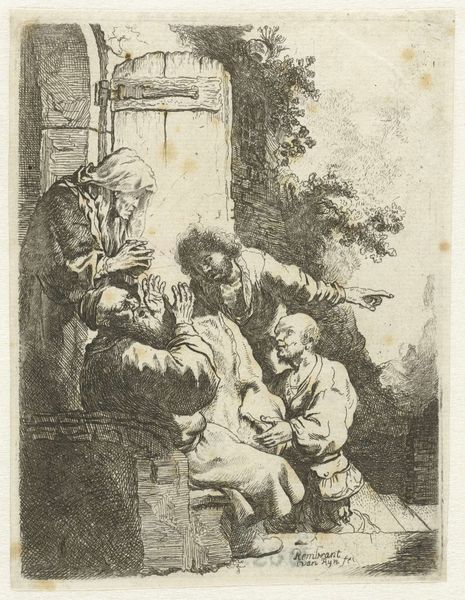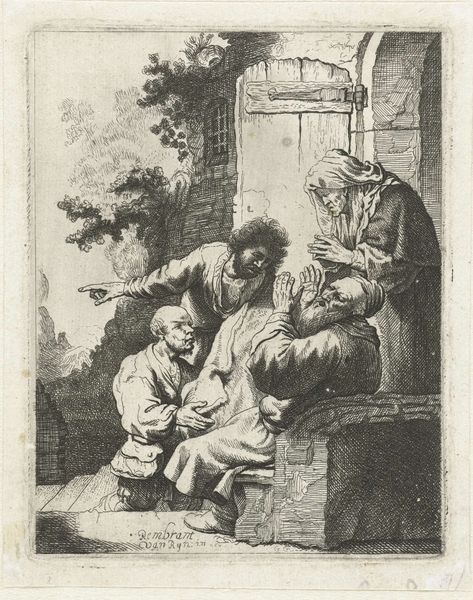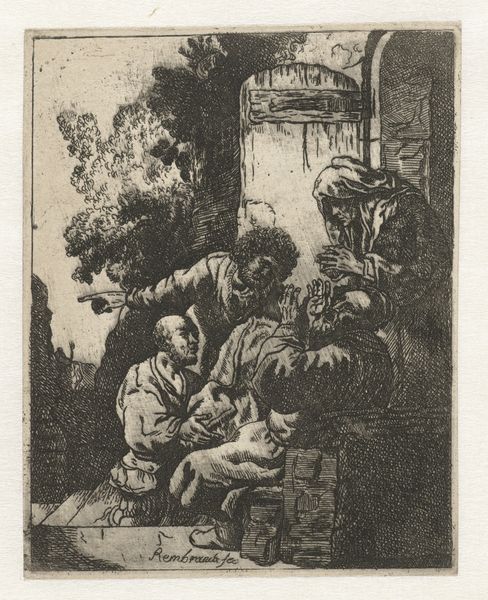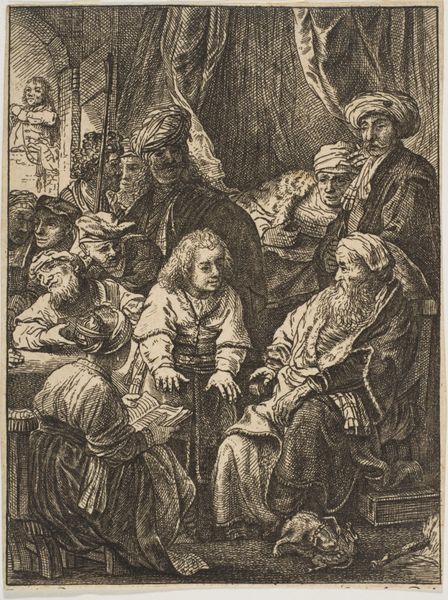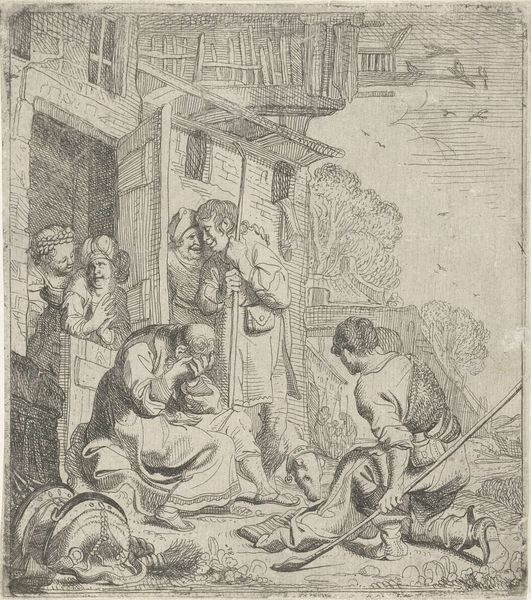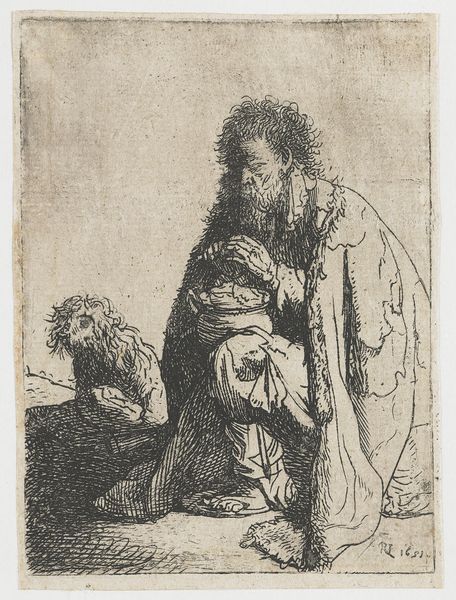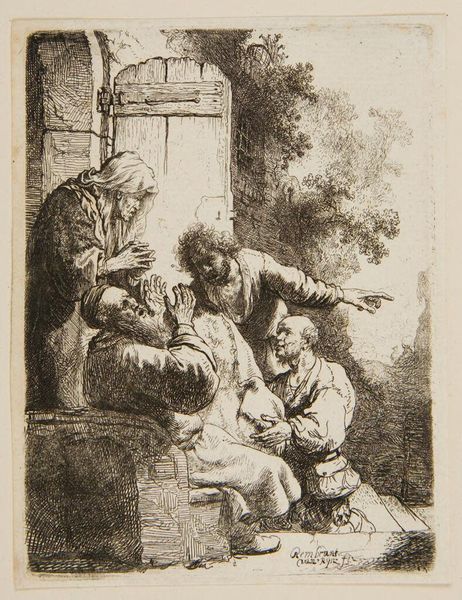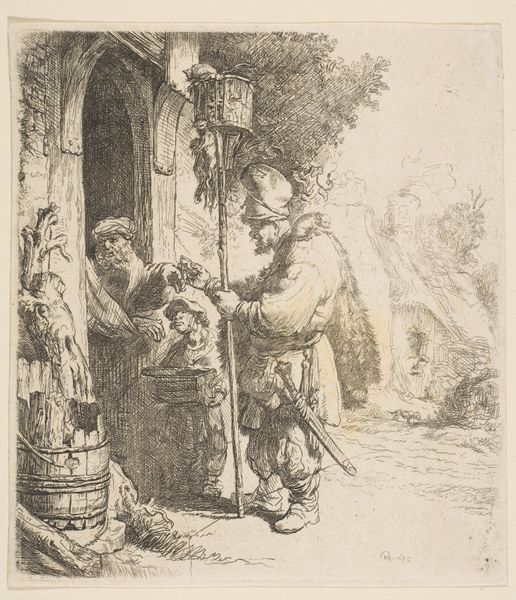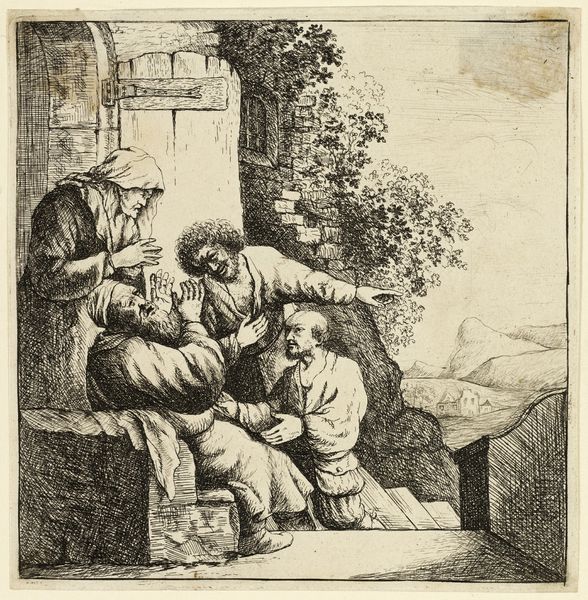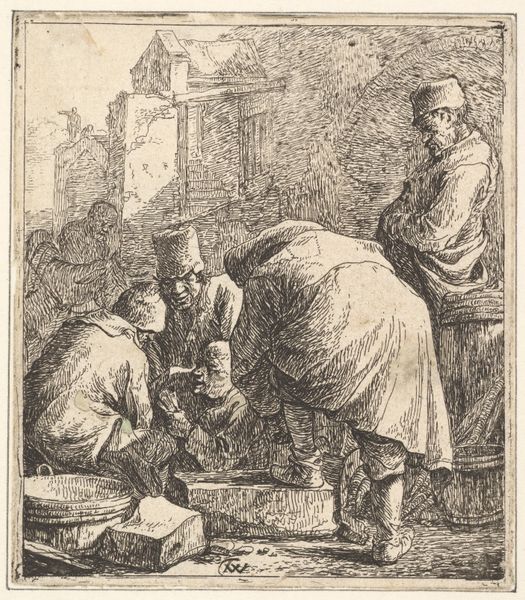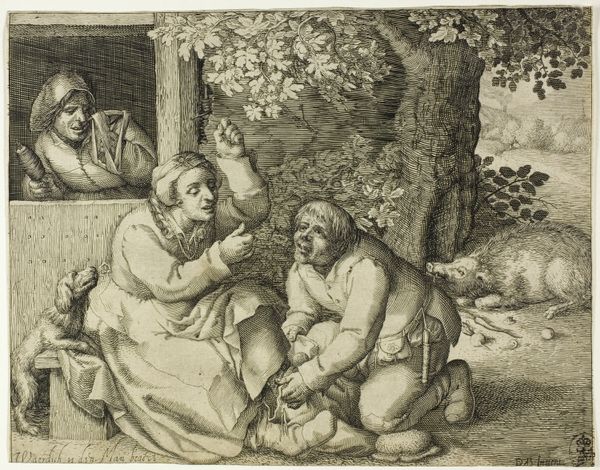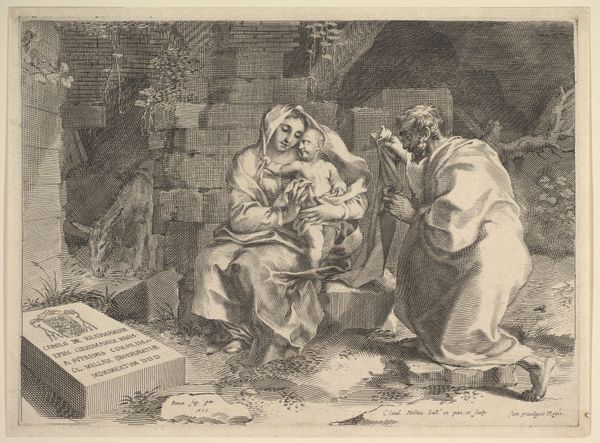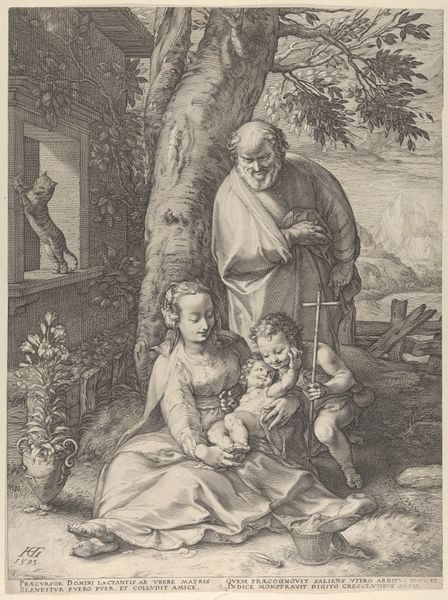
drawing, print, etching
#
drawing
#
narrative-art
#
baroque
# print
#
etching
#
figuration
#
history-painting
Dimensions: Sheet: 4 7/16 × 3 3/16 in. (11.3 × 8.1 cm)
Copyright: Public Domain
Editor: This etching, "Joseph's Coat Brought to Jacob" by Johann Georg Hertel, likely created sometime between 1628 and 1638, depicts a really intense, sorrowful moment. There's so much grief radiating from Jacob. What key symbolic elements jump out to you in this work? Curator: The coat, of course, is central. It’s more than just clothing; it's a potent symbol of betrayal, loss, and deception. Think about how clothing often functions in art - it signals status, but more importantly, it can represent identity itself. Editor: I hadn't considered that. It’s like Joseph’s identity has been ripped away and replaced with… this bloodied mess. Curator: Precisely! The blood becomes a powerful symbol. The color red links to sacrifice, to injustice, and raw emotion. The pose of Jacob also resonates with gestures of mourning found across cultures and eras; notice how he mirrors the sorrow of the women beside him. Is the coat’s condition a direct reflection of Jacob’s inner turmoil? Editor: That's insightful, I’m starting to see how it works. Jacob's not just grieving a lost son; he's facing a profound crisis of faith and identity prompted by these men showing up in front of him. Curator: Exactly! It encapsulates the shattering of family bonds through wicked and perfidious intent. The pointing figure, often overlooked, accuses both Joseph and the elderly Jacob. Editor: I now better recognize the historical precedent. The layering of symbolic and emotional content through a familiar story reveals just how powerful a visual vocabulary can be! Curator: Absolutely. Reflecting on works such as this reminds us how symbols operate to transcend temporal constraints, carrying human values, feelings, and memories from the past to present and onwards into the future.
Comments
No comments
Be the first to comment and join the conversation on the ultimate creative platform.
